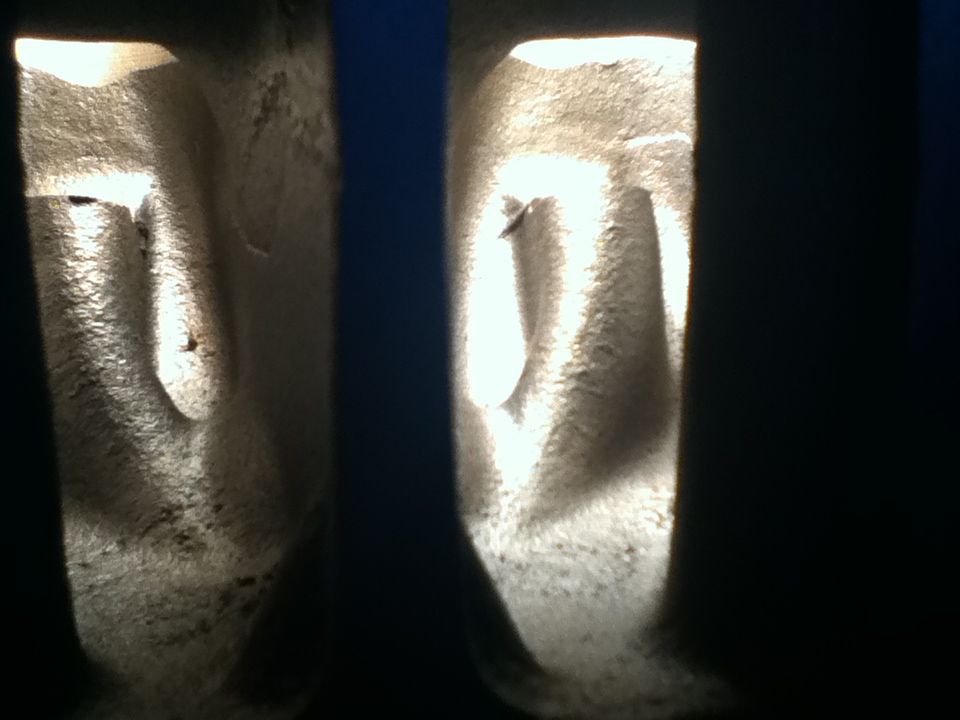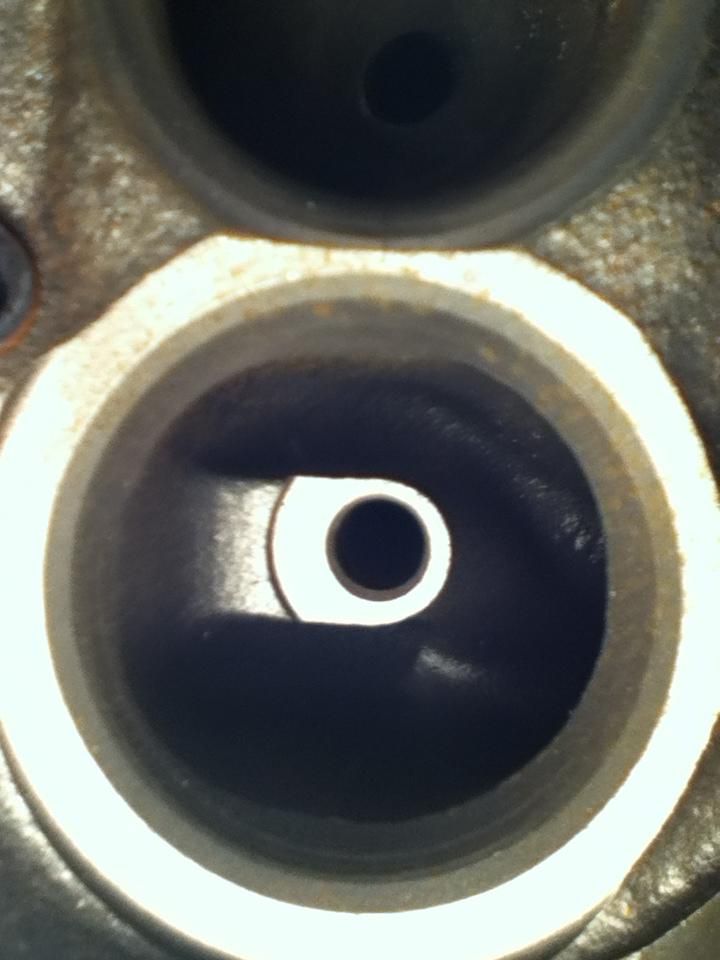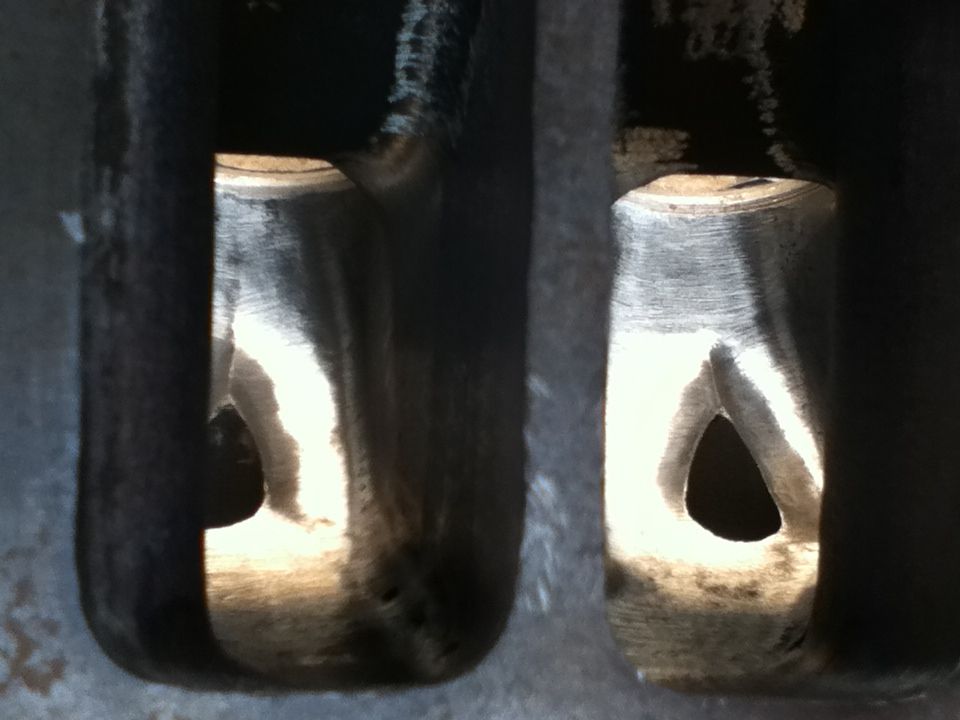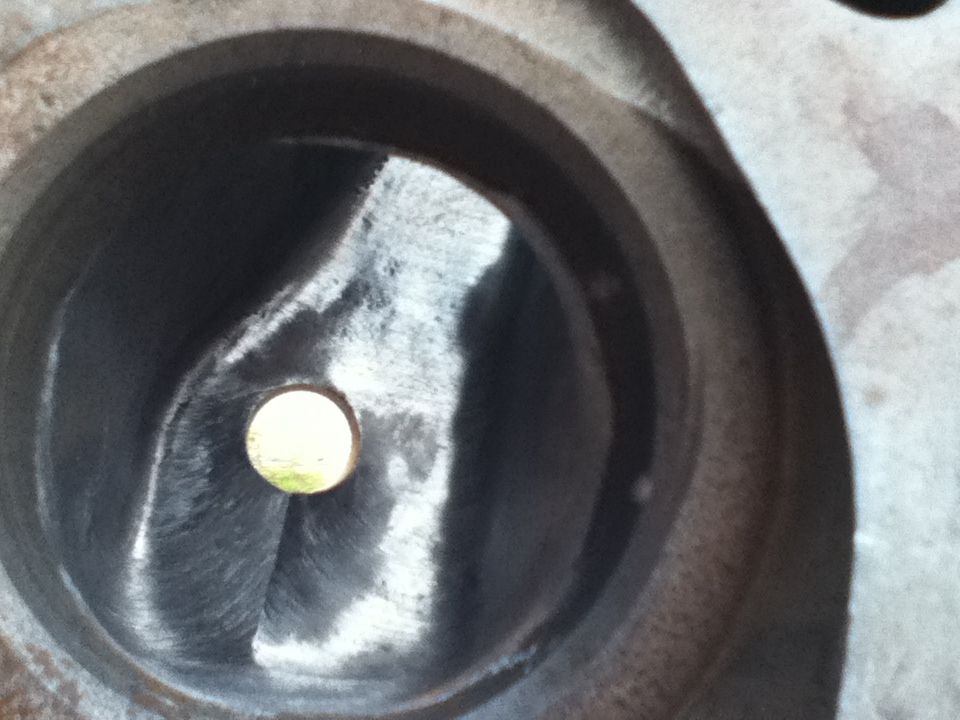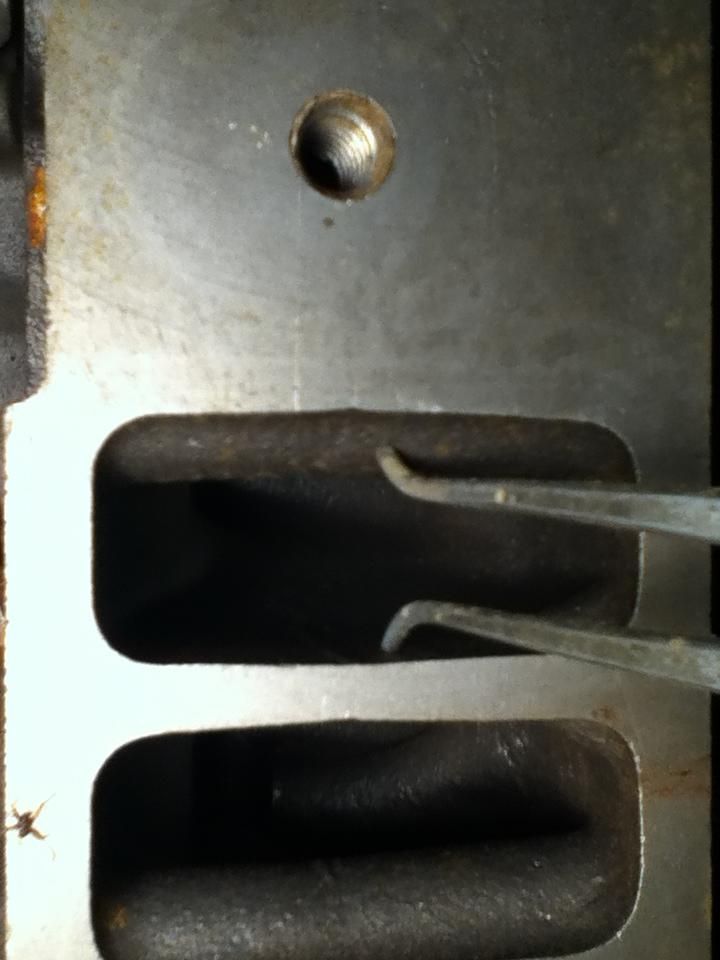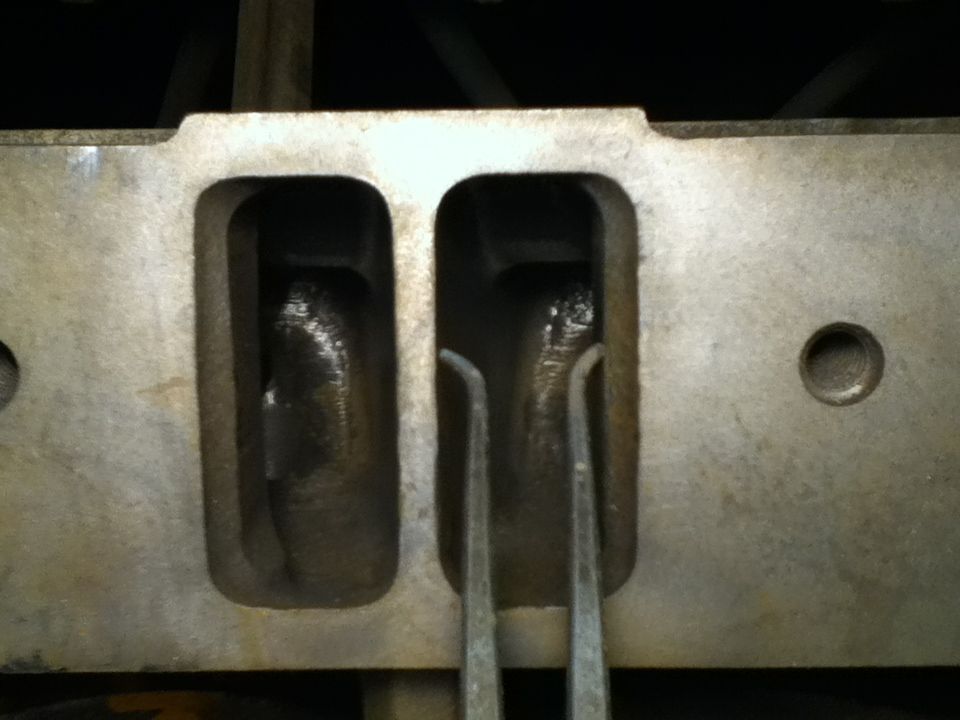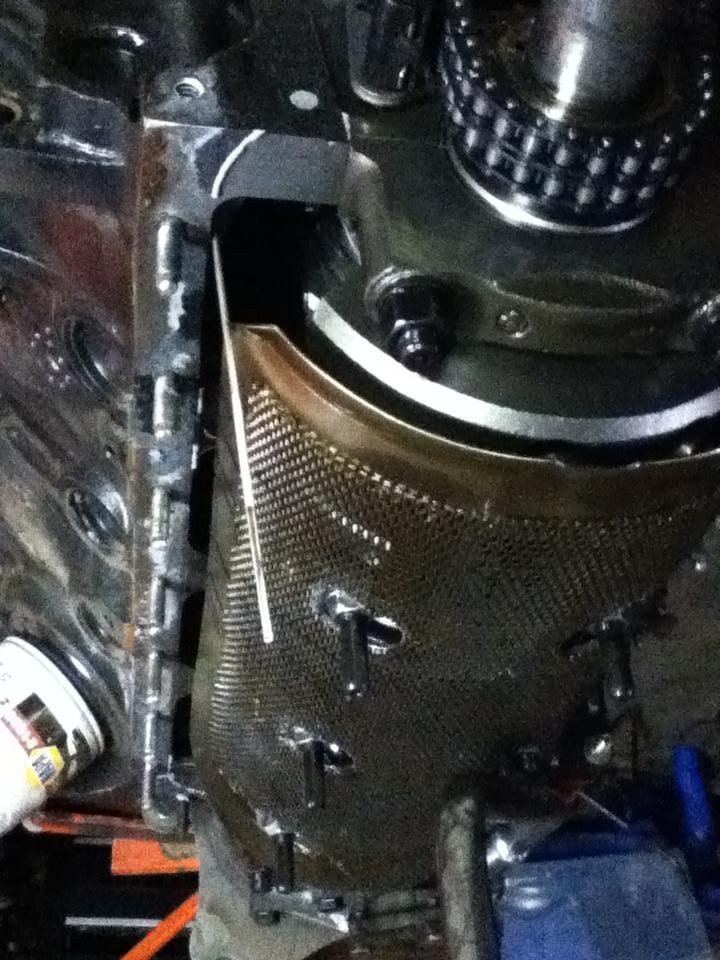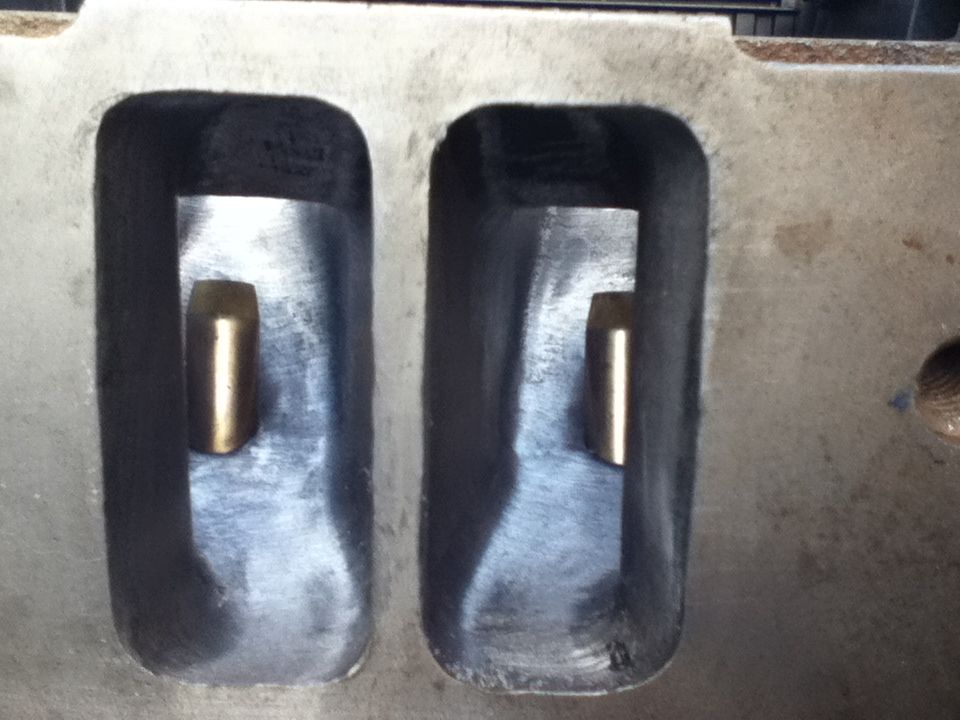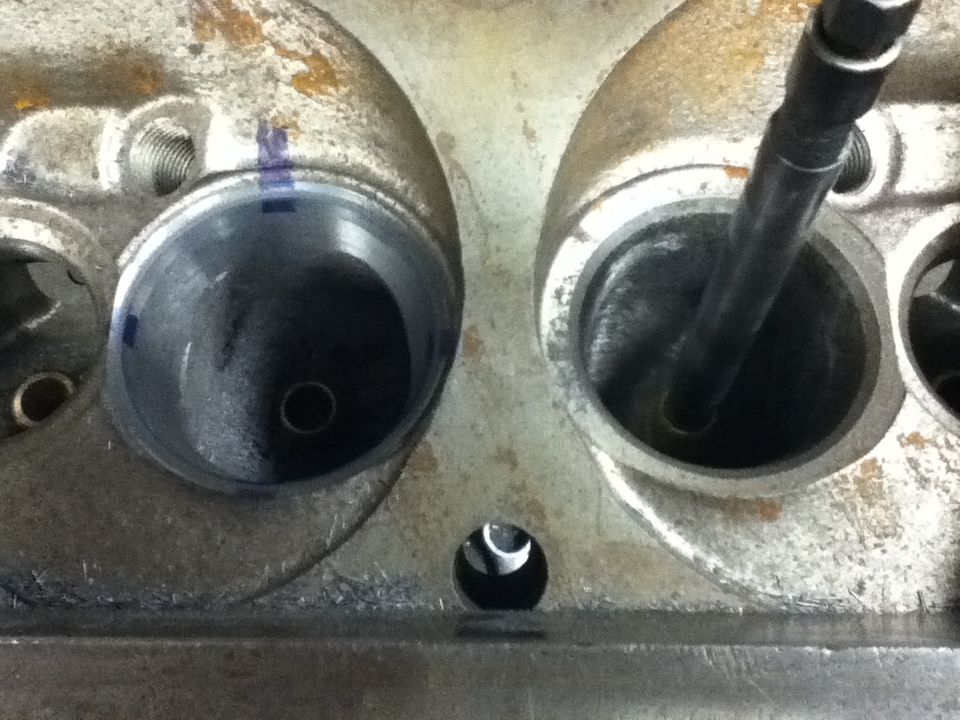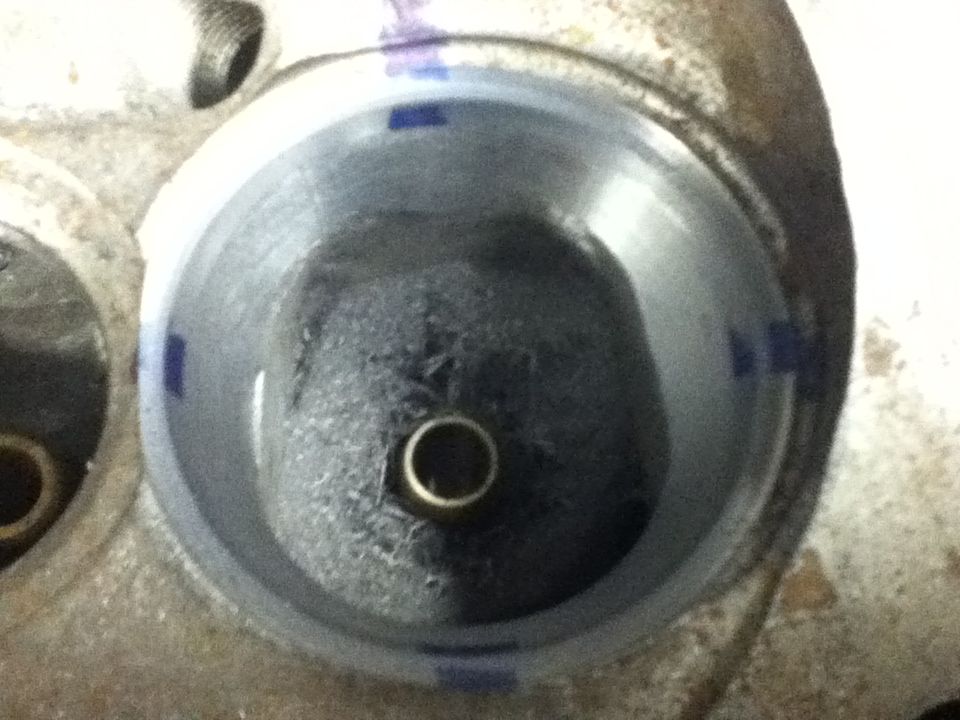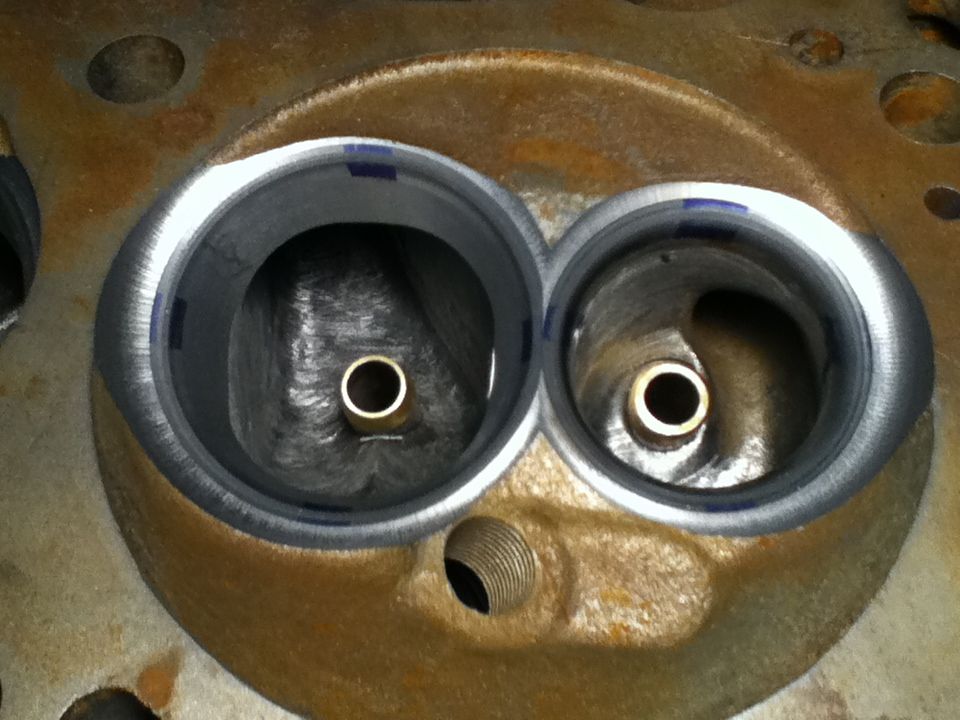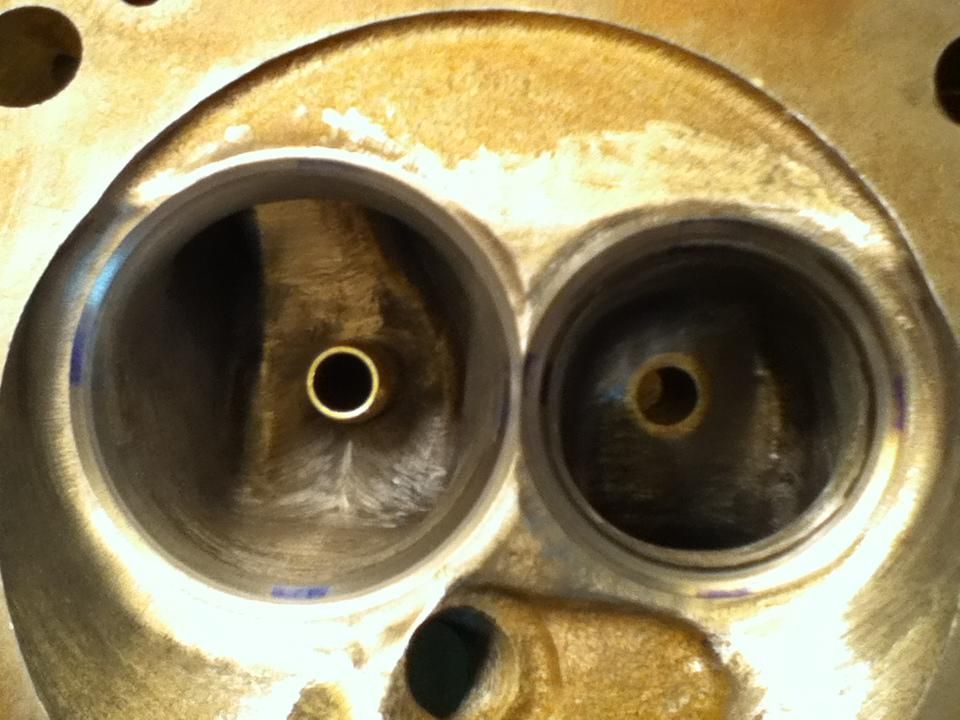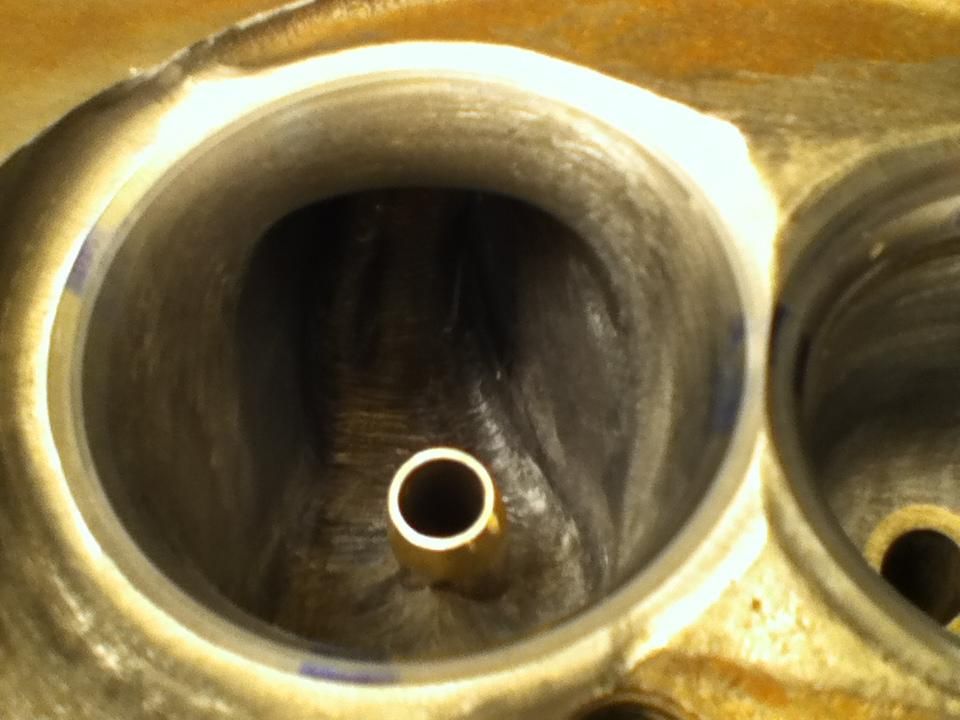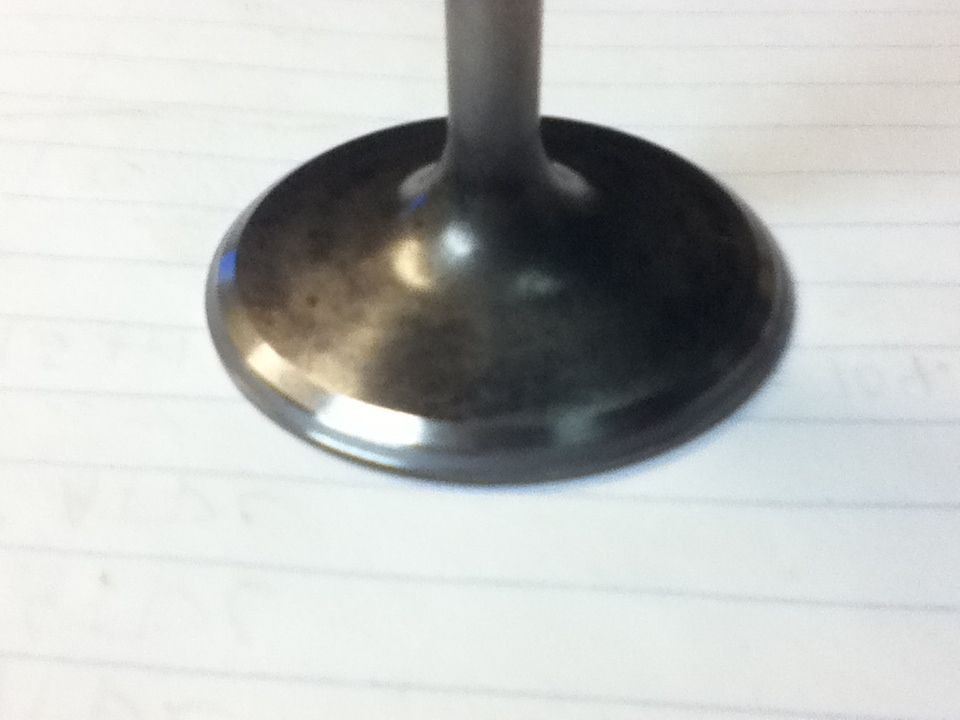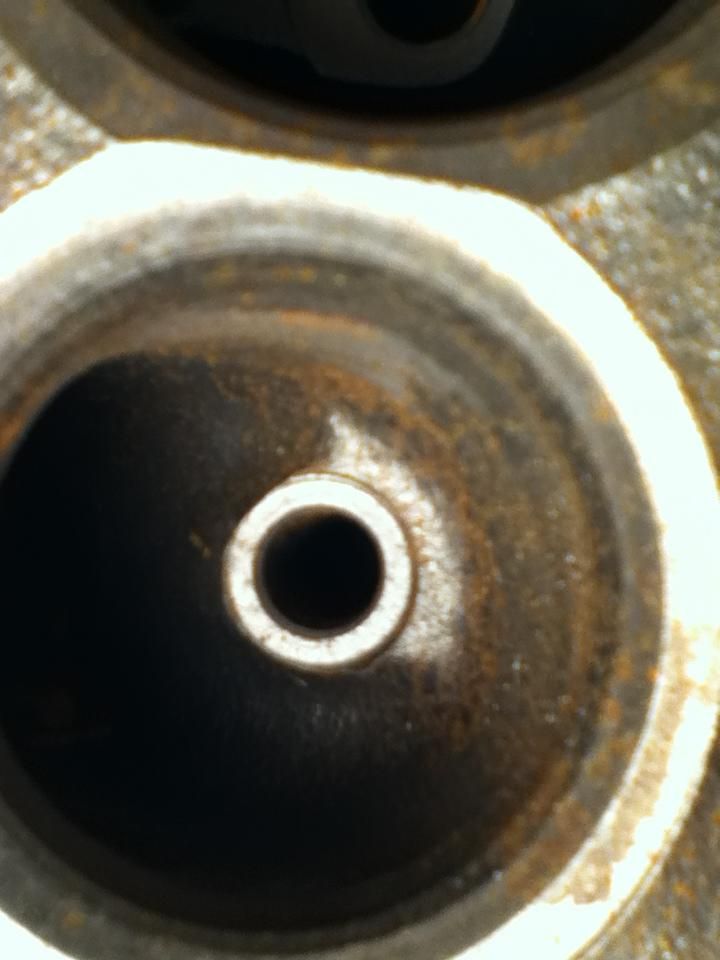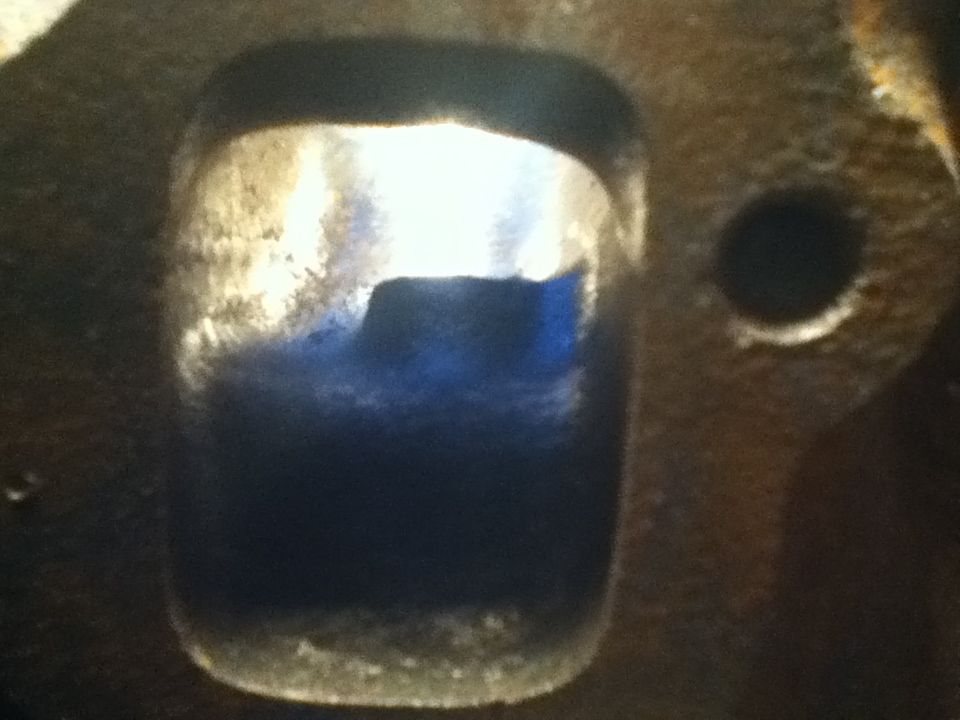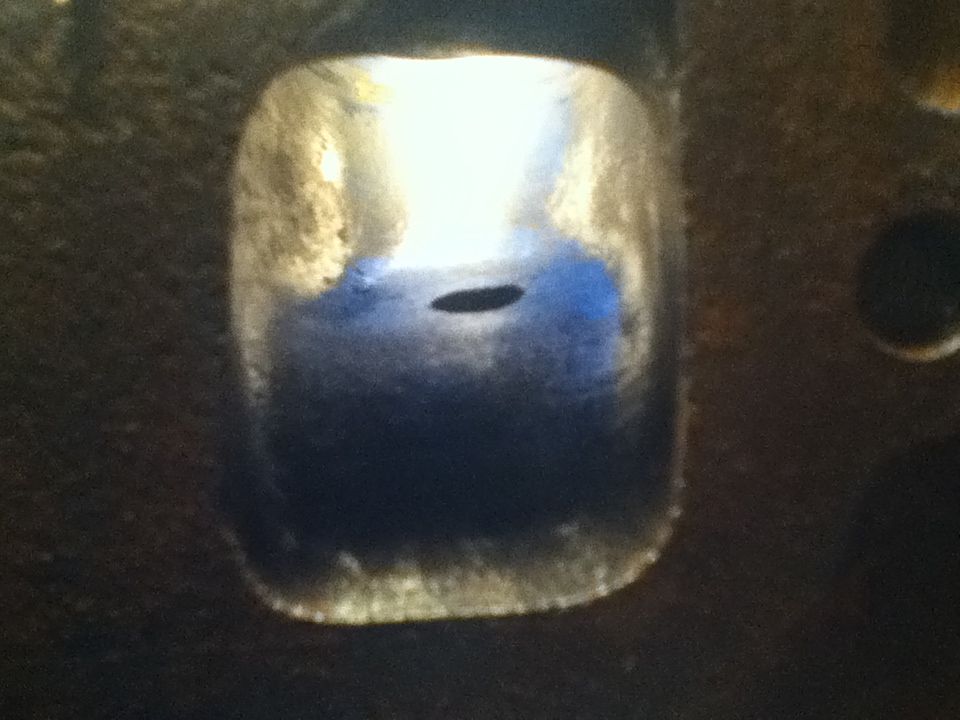skrews
Well-Known Member
Thought I'd share my head porting project. 308 castings destined to go on my Left over parts 360 engine build http://www.forabodiesonly.com/mopar/showthread.php?t=198914&highlight=left+parts+360 . Got 442HP outta that thing. Looking to bump it up to around 500HP. The plan is swapping in these heads, replacing the the ol' .484 cam with a 248*/248* @ .050 106 lsa .563" Hughes solid cam, Moroso deep pan running 6 qts. with Milodon windage screen, and a crank case evac system. Pretty much all stuff I got kicking around. Also replacing the 4300-4500ish verter for a 5500-5600 unit ( horse tradin deal ). The ultimate goal is low 11s, on pump gas, using as many left over or scrounged parts as possible. Low buck as possible. 
I will update this post as things come together.
I will update this post as things come together.

